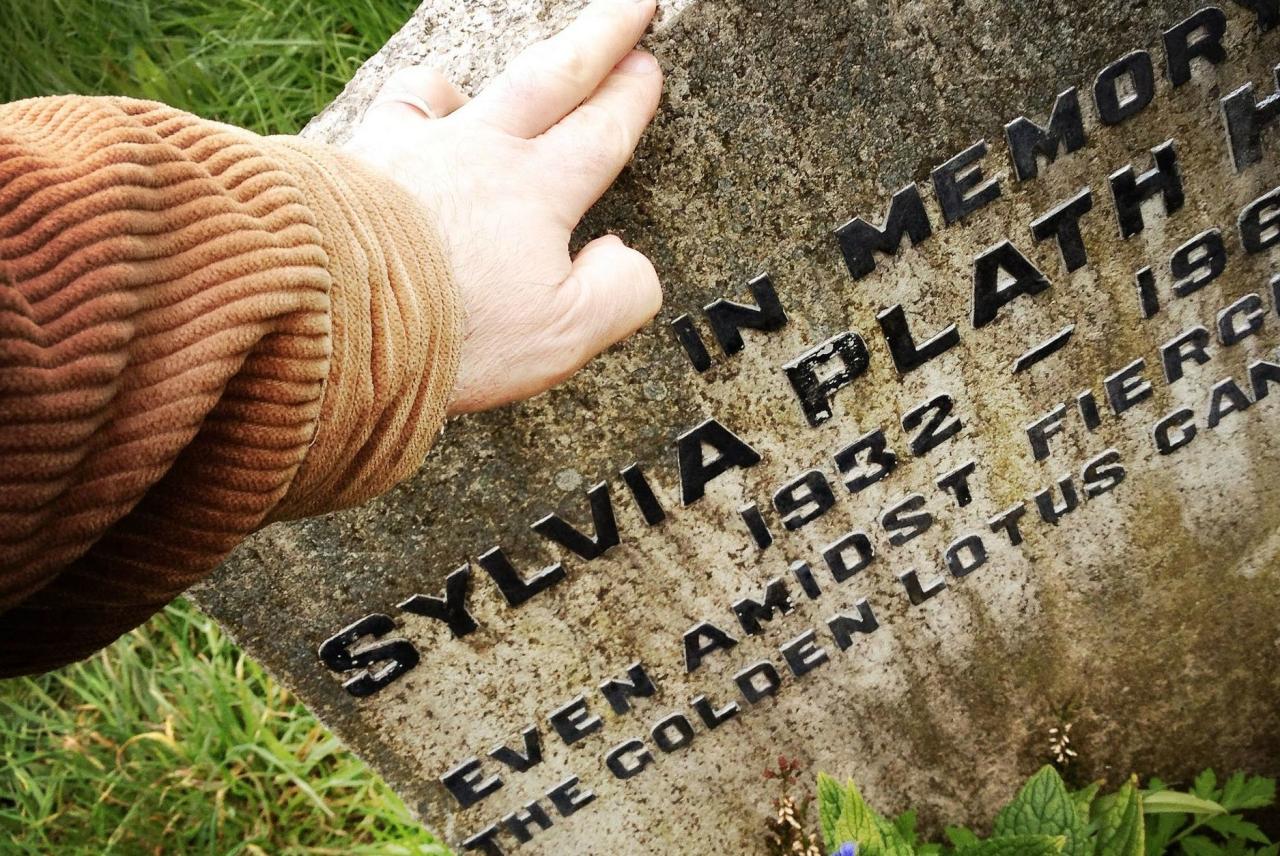Sylvia plath full fathom five – In the realm of confessional poetry, Sylvia Plath’s “Full Fathom Five” stands as a haunting masterpiece, exploring the depths of loss, identity, and the search for meaning in a world of darkness. This poem, deeply rooted in Plath’s personal struggles and literary influences, invites us on a journey through the complexities of her mind.
Plath’s confessional style, characterized by its raw and unflinching honesty, is evident throughout the poem. She delves into the depths of her own psyche, laying bare her pain, despair, and longing. The use of vivid imagery and symbolism creates a rich tapestry of emotions, capturing the essence of her inner turmoil.
Sylvia Plath’s Literary Style: Sylvia Plath Full Fathom Five

Sylvia Plath’s literary style is characterized by its confessional nature, vivid imagery, and exploration of feminist themes. Her poetry often delves into the depths of her personal experiences, exposing her innermost thoughts and emotions with raw honesty.
Confessional Nature
Plath’s poetry is deeply confessional, revealing her struggles with mental illness, trauma, and loss. She bares her soul, sharing her pain, anger, and despair with unflinching candor. This confessional style allows readers to connect with her on a profound level, as they witness the raw and vulnerable experiences of a fellow human being.
Imagery and Symbolism
Plath’s use of imagery and symbolism is both evocative and unsettling. Her vivid descriptions of nature, particularly the sea, reflect her own emotional turmoil. She employs metaphors and symbols to explore themes of death, rebirth, and the search for meaning in a chaotic world.
Feminist Themes
Plath’s writing is infused with feminist themes. She challenges traditional gender roles and explores the complexities of female identity. Her poems address issues of domesticity, motherhood, and the societal expectations placed on women. Plath’s feminist perspective adds depth and resonance to her work, as she gives voice to the struggles and aspirations of women in a patriarchal society.
Sylvia Plath’s poem “Full Fathom Five” explores the themes of loss and despair. It’s a powerful and moving piece that resonates with readers who have experienced similar emotions. To better understand the poem, it’s helpful to consider the concept of percentages.
For instance, what percent is 16 out of 18 ? This calculation can help us quantify the speaker’s feelings of loss and isolation. Returning to “Full Fathom Five,” the poem’s imagery and language create a vivid and haunting depiction of the speaker’s emotional state.
Full Fathom Five

In Sylvia Plath’s haunting poem “Full Fathom Five,” the title holds profound significance. It draws inspiration from a line in Shakespeare’s “The Tempest,” where Ariel sings about the drowned Ferdinand lying “full fathom five” beneath the sea. This reference establishes an immediate connection between Plath’s poem and the themes of death, loss, and the search for identity.
Structure, Meter, and Rhyme Scheme, Sylvia plath full fathom five
The poem is composed of three stanzas, each with five lines. The meter is iambic tetrameter, with four stressed syllables per line. The rhyme scheme is ABABA, creating a sense of closure and finality. The short lines and regular rhythm contribute to the poem’s haunting and elegiac tone.
Exploration of Themes
Death and Loss:The poem grapples with the profound sense of loss and grief that accompanies death. The speaker mourns the absence of a loved one, whose presence is now only felt as a void in her life. The imagery of the “black bell” and “cold sea” evokes a sense of finality and the irrevocable nature of death.
Search for Identity:Amidst the grief, the speaker also embarks on a search for her own identity. She questions her place in the world and her connection to others. The poem explores the complexities of self-discovery and the challenges of finding meaning in the face of loss.
Sylvia Plath’s Personal Life and Influences

Sylvia Plath’s personal life was marked by struggles with mental illness, particularly depression. Her experiences with electroconvulsive therapy and her suicide attempts profoundly influenced her writing, adding a raw and intense emotional depth to her work.
Impact of Mental Illness
Plath’s struggles with depression and mental anguish permeate her writing, creating a sense of despair and alienation. Poems like “Daddy” and “Lady Lazarus” grapple with the pain and trauma she endured, using vivid imagery and confessional language to explore the depths of her suffering.
Marriage to Ted Hughes
Plath’s marriage to fellow poet Ted Hughes was both passionate and tumultuous. Their relationship inspired some of her most celebrated work, including “Ariel,” but it was also marked by infidelity and emotional turmoil. Hughes’s influence on Plath’s writing is evident in the use of nature imagery and the exploration of female sexuality and power.
Influence of Other Poets and Writers
Plath’s writing was influenced by a wide range of poets and writers, including Emily Dickinson, D.H. Lawrence, and Anne Sexton. Dickinson’s use of slant rhyme and fragmented syntax resonated with Plath, while Lawrence’s exploration of primal emotions and Sexton’s confessional style inspired her own work.
The Legacy of Sylvia Plath

Sylvia Plath’s enduring influence on contemporary literature is undeniable. Her confessional and feminist poetry has resonated with generations of readers, inspiring countless writers and artists.
Critical Reception and Impact on Feminist and Confessional Poetry
Plath’s work has been praised for its raw emotional intensity and unflinching exploration of female experience. Critics have hailed her as a pioneer of confessional poetry, a movement that emerged in the 1950s and 1960s. Plath’s writing challenged traditional gender roles and exposed the complexities of female sexuality, motherhood, and mental illness.
Her work has had a profound impact on feminist literature, giving voice to the struggles and experiences of women.
Adaptations and Interpretations in Different Mediums
Plath’s writing has been adapted and interpreted in various mediums, including film, theater, and music. Her novel “The Bell Jar” has been adapted into a critically acclaimed film, and her poetry has been set to music by renowned composers. Plath’s work continues to inspire artists and creators across disciplines, ensuring her legacy as a literary icon.
FAQ Insights
What is the significance of the title “Full Fathom Five”?
The title alludes to a line from Shakespeare’s “The Tempest,” where Ariel sings about the drowning of Ferdinand: “Full fathom five thy father lies; Of his bones are coral made.” Plath uses this imagery to explore themes of death, loss, and the transformation of the self.
How does Plath use imagery and symbolism in the poem?
Plath employs a wealth of vivid imagery and symbolism to convey her emotional state. For instance, she uses water imagery to represent both the depths of her despair and the possibility of rebirth. The “full fathom five” of the title suggests a descent into the underworld, while the “coral made” bones evoke the idea of transformation and the enduring legacy of the dead.
What are the feminist themes present in the poem?
Plath’s exploration of female identity and experience is central to the poem. She challenges traditional gender roles and explores the complexities of women’s relationships with men. The poem also addresses issues of power dynamics and the silencing of women’s voices.